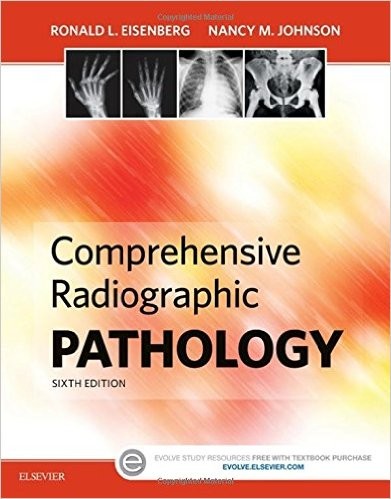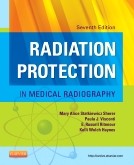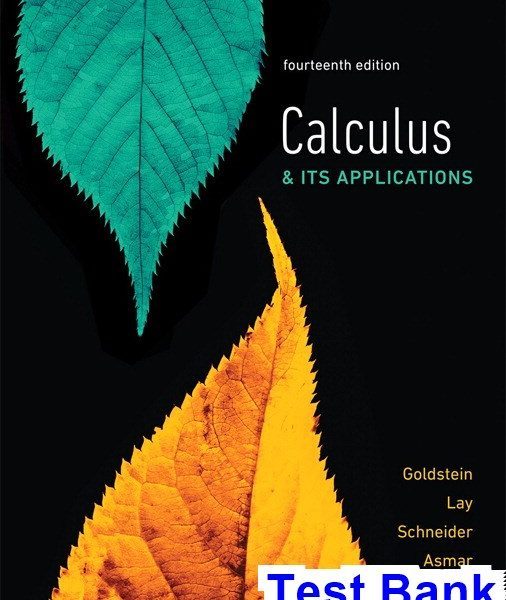Test bank Principles and Practice of Radiation Therapy 4th Edition
$55.00
Test bank Principles and Practice of Radiation Therapy 4th Edition
- Description
- Reviews (0)
Description
You will receive this product immediate after placing the order
Principles and Practice of Radiation Therapy 4th Edition Test Bank
Chapter 01: Cancer: An Overview
Washington & Leaver: Principles and Practice of Radiation Therapy, 4th Edition
MULTIPLE CHOICE
; Knowledge of cancer dates back to which of the following?
|
a. |
1600 BC Egypt |
|
b. |
1600 AD England |
|
c. |
400 BC Greece |
|
d. |
1900 AD Germany |
ANS: A
The first known observations of cancer date back to 1600 BC Egypt.
REF: p. 3
; Which of the following is not a term for genes involved in the cancer process?
|
a. |
Anti-oncogenes |
|
b. |
Oncogenes |
|
c. |
Proto-oncogenes |
|
d. |
Somato-oncogenes |
ANS: D
Anti-oncogenes, oncogenes, and proto-oncogenes have all been identified as playing a part in the development of tumors. Somato-oncogenes do not exist.
REF: p. 3
; Tumor-suppressor genes are also known as ___________.
|
a. |
anti-oncogenes |
|
b. |
oncogenes |
|
c. |
proto-oncogenes |
|
d. |
somato-oncogenes |
ANS: A
Although more commonly called tumor-suppressor genes, these genes are also known as anti-oncogenes.
REF: p. 3
; Which of the following is not a phase of the mammalian cell cycle?
|
a. |
G0 |
|
b. |
G1 |
|
c. |
G2 |
|
d. |
G3 |
ANS: D
G0 is a resting phase where cells do not enter mitosis. G1 and G2 are growth phases during the mammalian cell cycle. Although some algae species demonstrate a relatively long phase between nuclear division and cleavage of the cell termed G3, this phase is not part of the mammalian cell cycle.
REF: pp. 3-4
; Which phase of the mammalian cell cycle is composed of functional cells not preparing for DNA replication?
|
a. |
G0 |
|
b. |
G1 |
|
c. |
G2 |
|
d. |
S |
|
e. |
M |
ANS: A
G0 is typically depicted outside the cell cycle because cells in this phase are not preparing for DNA synthesis.
REF: pp. 3-4
; In which phase of the mammalian cell cycle does DNA synthesis occur?
|
a. |
G0 |
|
b. |
G1 |
|
c. |
G2 |
|
d. |
S |
|
e. |
M |
ANS: D
“S” is representative of synthesis and is the phase in which DNA synthesis occurs.
REF: p. 4
; Identify the correct order for the phases of the mammalian cell cycle.
|
a. |
G1, G2, M, S |
|
b. |
G1, G2, S, M |
|
c. |
G1, M, G2, S |
|
d. |
G1, S, G2, M |
ANS: D
The typical mammalian cell will move from G1 to S, followed by G2, and then M. Some cells will eventually pause in G0 after M.
REF: pp. 3-4
; Which of the following is true of anaplastic tumors?
|
a. |
Closely resemble the cells of origin |
|
b. |
Maintain some resemblance of the cells of origin |
|
c. |
Do not resemble the cells of origin |
ANS: C
Anaplastic tumors are also known as undifferentiated tumors. Undifferentiated cells do not resemble the normal cells of origin.
REF: p. 4
; Which of the following is (are) true of benign tumors?
|
a. |
Well differentiated |
|
b. |
Do not metastasize |
|
c. |
Encapsulated |
|
d. |
All of the above |
ANS: D
Benign tumors typically are well differentiated, do not metastasize, and are encapsulated.
REF: p. 4
; Which of the following factors does not affect the incidence of tumor sites?
|
a. |
Informational |
|
b. |
Environmental |
|
c. |
Technological |
|
d. |
Geographic |
ANS: A
Tumor site incidence is affected by environmental factors such as sun exposure. It is also affected by technological factors such as the advent of more precise imaging modalities. Additionally, tumor site incidence is affected by geographic factors, as exemplified by gastrointestinal cancers in Japan.
REF: pp. 5-6
; What is defined as the “study of the cause of disease”?
|
a. |
Etiology |
|
b. |
Etymology |
|
c. |
Epidemiology |
|
d. |
Entomology |
ANS: A
Etiology is defined as the “study of the cause of ; Etymology is the “study of word origins,” epidemiology is the “study of disease incidence,” and entomology is the “study of ;
REF: p. 5
; What is the “study of disease incidence”?
|
a. |
Etiology |
|
b. |
Etymology |
|
c. |
Epidemiology |
|
d. |
Entomology |
ANS: C
Epidemiology is defined as the “study of disease ; Etiology is the “study of the cause of disease,” etymology is the “study of word origins,” and entomology is the “study of ;
REF: p. 6
; Which of the following make(s) for an effective screening examination?
|
a. |
Specific |
|
b. |
Sensitive |
|
c. |
Cost-effective |
|
d. |
Accurate |
|
e. |
All of the above |
ANS: E
For a screen tool to be effective, it must be specific, sensitive, accurate, and cost effective.
REF: p. 6
; What is the “workup”?
|
a. |
The initial nursing visit |
|
b. |
The initial physician visit |
|
c. |
A series of diagnostic examinations |
|
d. |
A physical assessment of the patient |
ANS: C
Although the term workup may be used by different radiation oncology departments in various ways, the generally accepted definition of this term is a series of diagnostic examinations performed after a patient has been diagnosed with a disease or condition. This may be done at the time of the initial physician or nurse visit and may include a physical assessment, but these are only portions of the entire workup.
REF: p. 6
; Which of the following is not typically part of the workup?
|
a. |
Patient demographics |
|
b. |
Type, location, and size of tumor |
|
c. |
Normal tissue invasion |
|
d. |
Presence of metastases |
ANS: A
The workup includes information about the tumor such as type, size, and location, amount of normal tissue invasion, and presence of metastases. Typically, demographic information is collected at a time other than during the workup by support staff.
REF: pp. 6-7
; Which imaging modality is beneficial for distinguishing between recurrent disease and other tissue changes post treatment?
|
a. |
CT |
|
b. |
PET |
|
c. |
Plain films |
|
d. |
MR |
ANS: B
Although a CT or MR scan may be used as part of the diagnostic process for ruling out recurrent disease, PET is the only imaging modality listed that can differentiate recurrence from other tissue changes.
REF: p. 7
; What is the most common tumor staging system?
|
a. |
AJCC |
|
b. |
FIGO |
|
c. |
TNM |
|
d. |
UICC |
ANS: C
TNM is the most commonly used staging system. This system has been adopted by AJCC and UICC. FIGO is the staging system used for gynecologic tumors but has no application to the majority of tumors.
REF: p. 7
; A T1N0MX tumor has how many positive lymph nodes?
|
a. |
0 |
|
b. |
1 |
|
c. |
2 |
|
d. |
Unknown |
ANS: A
N0 is an indication of no positive lymph nodes.
REF: p. 7
; Tumors are the result of which of the following?
|
a. |
Black bile |
|
b. |
Necrotic tissue |
|
c. |
Abnormal cellular proliferation |
|
d. |
Traumatic injury |
ANS: C
Once thought to be the result of black bile or traumatic injuries, tumors are now known to be the result of abnormal cellular proliferation. Tumor growth may result in a large central area of necrosis, but this is an effect rather than a cause.
REF: p. 3
; Tumor grade is a measure of ________.
; aggressiveness
II. differentiation
III. spread
|
a. |
I and II |
|
b. |
I and III |
|
c. |
II and III |
|
d. |
I, II, and III |
ANS: A
Tumor grade is a measure of both aggressiveness and differentiation. Staging is used to describe the tumor’s spread.
REF: pp. 7-8
; Which of the following biopsy methods results in the removal of the entire tumor?
|
a. |
Fine needle aspiration |
|
b. |
Core needle |
|
c. |
Incisional |
|
d. |
Excisional |
ANS: D
During a fine needle aspiration, only a few cells of the tumor are removed. The same is true of core needle biopsies. Incisional biopsies remove more tumor than either fine needle aspiration or core needle biopsy, but some of the tumor remains. During an excisional biopsy, the entire tumor is removed en bloc.
REF: pp. 8-9
; Which of the following biopsy methods cannot evaluate tumor architecture?
|
a. |
Fine needle aspiration |
|
b. |
Core needle |
|
c. |
Incisional |
|
d. |
Excisional |
ANS: A
Fine needle aspiration removes cells from a tumor but cannot retain the architecture of the tumor.
REF: pp. 8-9
; Factors that may exclude a patient from having surgery include all except which of the following?
|
a. |
Preexisting medical conditions |
|
b. |
Tumor location |
|
c. |
Patient preference |
|
d. |
Classification |
ANS: D
The invasive nature of surgical procedures for cancer removal may exclude some patients with preexisting conditions. In addition, the location of some tumors (such as base of skull lesions) may eliminate surgery as a possible treatment option. Furthermore, surgery may be excluded in an attempt to preserve function, as in the treatment of anal cancers. Tumor classification alone is not a contraindication for surgery.
REF: pp. 9-10
; When compared with surgery, benefits of radiation therapy include all except which of the following?
|
a. |
Instantaneous cure |
|
b. |
Better cosmetic results |
|
c. |
Preservation of function |
|
d. |
Noninvasive |
ANS: A
Individual results will vary based on tumor type and other factors but, as a general rule, radiation therapy provides patients with better cosmetic results than surgery. In addition, radiation therapy is noninvasive and can often preserve function not possible with surgery. However, only surgery can provide an instantaneous cure via total resection.
REF: p. 10
; Which of the following treatment techniques uses radioactive sources?
|
a. |
External beam |
|
b. |
Intraoperative |
|
c. |
Brachytherapy |
|
d. |
IMRT |
ANS: C
Typically, brachytherapy treatments require a radioactive source, although advances in nanotechnology have resulted in some brachytherapy procedures using miniature x-ray tubes. In times past, radioactive cobalt was used in external beam radiation therapy, but this process is now antiquated.
REF: p. 11
; Which of the following is not used for brachytherapy treatments?
|
a. |
Cesium |
|
b. |
Cobalt |
|
c. |
Iodine |
|
d. |
Iridium |
ANS: B
Although some reports document the use of cobalt for brachytherapy, it is traditionally used for external beam radiation therapy.
REF: p. 11
; High-dose after loading equipment is used in association with which treatment technique?
|
a. |
External beam |
|
b. |
Intraoperative |
|
c. |
Brachytherapy |
|
d. |
IMRT |
ANS: C
High-dose after loading equipment is used during brachytherapy treatments to reduce staff exposure to high doses of radiation.
REF: p. 11
; Pancreatic cancer may be treated using which technique?
|
a. |
Intraluminal |
|
b. |
Intravascular |
|
c. |
Intracavitary |
|
d. |
Intraoperative |
ANS: D
Although pancreatic cancer can be treated with radiation therapy by a number of different techniques, including 3D conformal, IMRT, and IGRT, it can also be treated using an intraoperative technique. Intraluminal, intravascular, and intracavitary are brachytherapy techniques not used for the treatment of pancreatic cancer.
REF: pp. 10-11
; Which of the following is a systemic treatment?
|
a. |
Surgery |
|
b. |
Radiation therapy |
|
c. |
Chemotherapy |
|
d. |
All of the above |
ANS: C
Radiation therapy and surgery are localized treatments, whereas chemotherapy is a systemic treatment.
REF: p. 11
; Which of the following routes of administration is used when treating bladder cancer with chemotherapy?
|
a. |
Oral |
|
b. |
Intra-arterial |
|
c. |
Intracavitary |
|
d. |
Intrathecal |
ANS: C
As described in the text, bladder cancer may be treated by instilling the chemotherapy agent directly into the bladder via a catheter. This process is known as intracavitary chemotherapy.
REF: p. 12
; Which classification of chemotherapy agents was the first to be identified as having anticancer activities?
|
a. |
Alkylating agents |
|
b. |
Antimetabolites |
|
c. |
Antibiotics |
|
d. |
Hormonal agents |
|
e. |
Nitrosoureas |
|
f. |
Vinca alkaloids |
ANS: A
The first chemotherapy agent was nitrous mustard, an alkylating agent.
REF: p. 12
; Which of the following are not cell cycles specific?
; Alkylating agents
II. Antimetabolites
III. Antibiotics
IV. Hormonal agents
V. Nitrosoureas
VI. Vinca alkaloids
|
a. |
I and II |
|
b. |
I and III |
|
c. |
I, III, and V |
|
d. |
II, IV, and VI |
|
e. |
II, III, and VI |
ANS: C
Alkylating agents are not cell cycle specific. Neither are anticancer antibiotics (although they are more effective during certain phases) nor nitrosoureas.
REF: p. 12
; Which classification of chemotherapy agents is derived from the periwinkle plant?
|
a. |
Alkylating agents |
|
b. |
Antimetabolites |
|
c. |
Antibiotics |
|
d. |
Hormonal agents |
|
e. |
Nitrosoureas |
|
f. |
Vinca alkaloids |
ANS: F
Periwinkle plants are part of the genus Vinca and are sometimes called vinca. It is from these plants that vinca alkaloids are derived.
REF: p. 12
; In which classification are the chemotherapy agent’s lipids soluble and capable of crossing the blood-brain barrier?
|
a. |
Alkylating agents |
|
b. |
Antimetabolites |
|
c. |
Antibiotics |
|
d. |
Hormonal agents |
|
e. |
Nitrosoureas |
|
f. |
Vinca alkaloids |
ANS: E
Nitrosoureas are the only classification of chemotherapy agents that are both lipid soluble and capable of passing through the blood-brain barrier.
REF: p. 12
; Which of the following is a radiosensitizing chemotherapy agent?
|
a. |
Cyclophosphamide |
|
b. |
5-Fluorouracil |
|
c. |
Doxorubicin |
|
d. |
Cisplatin |
ANS: C
Doxorubicin, also known as Adriamycin, acts a radiosensitizer. Cyclophosphamide, 5-fluorouracil, and cisplatin are not known to enhance the effects of radiation.
REF: p. 14
; Which of the following acts as a radioprotector?
|
a. |
Amifostine |
|
b. |
Actinomycin D |
|
c. |
Adriamycin |
|
d. |
Etoposide |
ANS: A
Amifostine acts to protect normal tissue against the effects of radiation and is, therefore, considered a radioprotector. Adriamycin is a radiosensitizer. Actinomycin and etoposide are not known to be radioprotectors.
REF: p. 14
; Injecting monoclonal antibodies is an example of which type of treatment?
|
a. |
Surgery |
|
b. |
Radiation therapy |
|
c. |
Chemotherapy |
|
d. |
Immunotherapy |
ANS: D
Injection of monoclonal antibodies is an example of immunotherapy.
REF: p. 14
; Which of the following best describes tumor spread?
|
a. |
Exophytic |
|
b. |
Multicentric |
|
c. |
Dissemination |
|
d. |
Ulceration |
ANS: C
Dissemination is defined as the act of spreading or diffusion and is most closely associated with cancer spread. Exophytic is used to describe tumors that grow outward. Multicentric describes tumors with more than one focus. Ulceration is the development of an ulcer and is unassociated with cancer spread.
REF: p. 15
; Which of the following factors is not considered when determining a prognosis?
|
a. |
Tumor stage |
|
b. |
Nodal status |
|
c. |
Gender |
|
d. |
All are considered |
ANS: D
Many factors are considered when a physician determines a prognosis, including tumor site, grade, stage, size, and histology; lymph node status; performance status; and the patient’s age, gender, and race.
REF: pp. 15-16
; Randomized studies are, by definition, which phase?
|
a. |
I |
|
b. |
II |
|
c. |
III |
|
d. |
IV |
ANS: C
Phase III studies are used to compare an experimental treatment to a standard treatment using a randomized sample.
REF: p. 16
; Which staff member is most responsible for designing the patient’s treatment plan?
|
a. |
Medical physicist |
|
b. |
Radiation oncologist |
|
c. |
Dosimetrist |
|
d. |
Radiation therapist |
ANS: C
Specific duties will vary between specific departments, but as a general rule the medical dosimetrist is responsible for designing the patient’s treatment plan. The medical physicist or radiation oncologist may oversee this process. In some departments, radiation therapists participate in the treatment planning process.
REF: pp. 16-17
; Which staff member is most responsible for the quality assurance to the treatment equipment?
|
a. |
Medical physicist |
|
b. |
Radiation oncologist |
|
c. |
Dosimetrist |
|
d. |
Radiation therapist |
ANS: A
Although all members of the cancer treatment team are responsible for quality assurance and the radiation therapists and medical dosimetrists may perform some of the duties specific to treatment equipment quality assurance, the person most responsible is the medical physicist.
REF: pp. 16-17
; Which of the following is an example of an etiologic factor?
|
a. |
Gender |
|
b. |
Sex |
|
c. |
Race |
|
d. |
Social habits |
ANS: D
An etiologic factor would be one associated with the cause of cancer. Social habits such as smoking and alcohol use have been linked to the cause or elevation of the risk of certain cancers.
REF: pp. 5-6
; A cancer designated with an N1 classification using the TNM staging system likely indicates which of the following?
|
a. |
No positive lymph nodes are involved. |
|
b. |
Positive lymph nodes are involved at distant sites. |
|
c. |
Positive lymph nodes are involved near the site. |
|
d. |
Lymph nodes cannot be accessed. |
ANS: C
The N category describes the status of lymph node involvement. Nx, N0-N4 are often used. N1 likely indicates that one or more positive lymph nodes are involved close to the original site of malignancy.
REF: p. 7
Be the first to review “Test bank Principles and Practice of Radiation Therapy 4th Edition”
You must be logged in to post a review.














Reviews
There are no reviews yet.